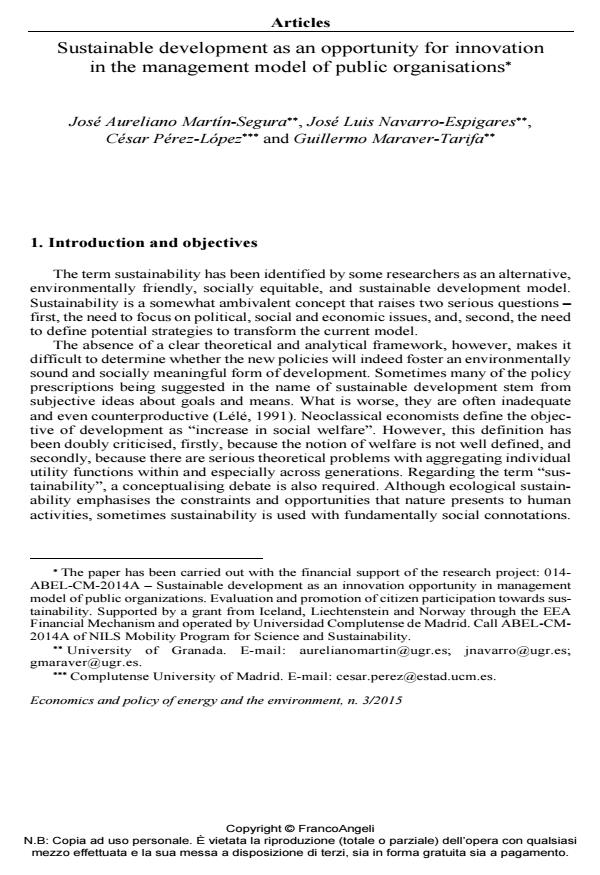Sustainable development as an opportunity for innovation in the management model of public organisations
Titolo Rivista ECONOMICS AND POLICY OF ENERGY AND THE ENVIRONMENT
Autori/Curatori José Aureliano Martín-Segura, José Luis Navarro-Espigares, César Pérez-López, Guillermo Maraver-Tarifa
Anno di pubblicazione 2016 Fascicolo 2015/3
Lingua Inglese Numero pagine 27 P. 19-45 Dimensione file 1491 KB
DOI 10.3280/EFE2015-003002
Il DOI è il codice a barre della proprietà intellettuale: per saperne di più
clicca qui
Qui sotto puoi vedere in anteprima la prima pagina di questo articolo.
Se questo articolo ti interessa, lo puoi acquistare (e scaricare in formato pdf) seguendo le facili indicazioni per acquistare il download credit. Acquista Download Credits per scaricare questo Articolo in formato PDF

FrancoAngeli è membro della Publishers International Linking Association, Inc (PILA)associazione indipendente e non profit per facilitare (attraverso i servizi tecnologici implementati da CrossRef.org) l’accesso degli studiosi ai contenuti digitali nelle pubblicazioni professionali e scientifiche
The literature recognises the great influence that environmental spending exerts on implementing LA21. But some authors raise doubts about the firm commitment of local government. Thus the main objective of this paper is to verify the authenticity of political commitment towards meeting the objectives of sustainable development by means of the budgetary support to these policies. To accomplish this verification, we apply the Difference in Differences technique for the period 2002-2012 in the Spanish municipalities. Results obtained confirmed the initial hypothesis and show that local governments that adhered to LA21 increased their environmental expenses to a greater degree.
Parole chiave:Local Agenda 21, environmental expenses, difference in differences.
Jel codes:H76, H72, Q58, C21, C33
José Aureliano Martín-Segura, José Luis Navarro-Espigares, César Pérez-López, Guillermo Maraver-Tarifa, Sustainable development as an opportunity for innovation in the management model of public organisations in "ECONOMICS AND POLICY OF ENERGY AND THE ENVIRONMENT" 3/2015, pp 19-45, DOI: 10.3280/EFE2015-003002